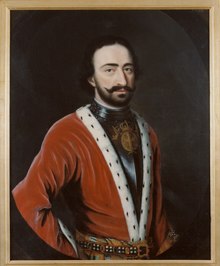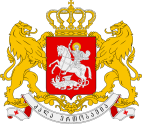Kingdom of Imereti იმერეთის სამეფო | |||||||||||||||||
|---|---|---|---|---|---|---|---|---|---|---|---|---|---|---|---|---|---|
| 1455–1810 | |||||||||||||||||
 The Kingdom of Imereti in 1490 | |||||||||||||||||
| Capital | Kutaisi | ||||||||||||||||
| Common languages | Georgian | ||||||||||||||||
| Religion | Eastern Orthodox Christianity | ||||||||||||||||
| Government | Monarchy | ||||||||||||||||
| King | |||||||||||||||||
• 1260–1293 | David IV (first) | ||||||||||||||||
• 1789–1810 | Solomon II (last) | ||||||||||||||||
| History | |||||||||||||||||
• Established | 1455 | ||||||||||||||||
• Independence from Georgia | 1455 | ||||||||||||||||
• Vassal of the Ottoman Empire | 29 May 1555 | ||||||||||||||||
• Vassal of the Russian Empire | 25 April 1804 | ||||||||||||||||
• Russian Annexation | 20 February 1810 | ||||||||||||||||
| |||||||||||||||||
| Today part of | Georgia | ||||||||||||||||


The Kingdom of Imereti (Georgian: იმერეთის სამეფო, romanized: imeretis samepo) was a Georgian monarchy established in 1455 by a member of the house of Bagrationi when the Kingdom of Georgia was dissolved into rival kingdoms. Before that time, Imereti was considered a separate kingdom within the Kingdom of Georgia, of which a cadet branch of the Bagrationi royal family held the crown.[1]
The realm was conquered by George V the Brilliant and once again united with the east Kingdom of Georgia.[2] From 1455 onward, however, Imereti became a constant battleground between Georgian and Ottoman forces for several centuries, resulting in the kingdom's progressive decline due to this ongoing instability.These threats pushed local Georgian rulers to seek closer ties with Tsardom of Russia. In 1649, Imereti sent ambassadors to the Russian royal court and Russia returned favor in 1651. In the presence of Russian ambassadors, Alexander III of Imereti swore an oath of allegiance to Tsar Alexis of Russia.[3] However, internal conflicts among Georgian royalty continued and, although Alexander III briefly managed to control all of Western Georgia, this consolidation was short lived. By the time of his death in 1660, Western Georgia was still in a state of flux.[4] In this chaotic period, Archil of Imereti was enthroned and deposed several times. His efforts to secure assistance from Russia and, later, Pope Innocent XII proved unsuccessful and he was finally exiled to Russia.[5]
Under pressure from Pavel Tsitsianov, in 1804 Solomon II of Imereti accepted Russian Imperial suzerainty, only to be deposed entirely in 1810. During the time that Imereti was a vassal state, the Mingrelia, Abkhazia and Guria princedoms declared their independence from Imereti and established their own governments.



